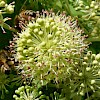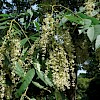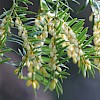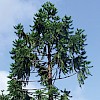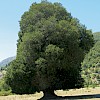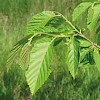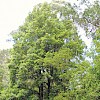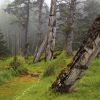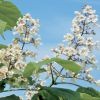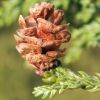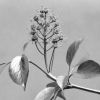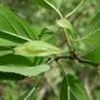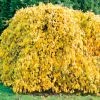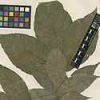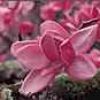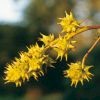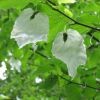IDS Tree of the Year
Our tree for 2025 is Erythrina crista-galli, the cockspur coral tree.

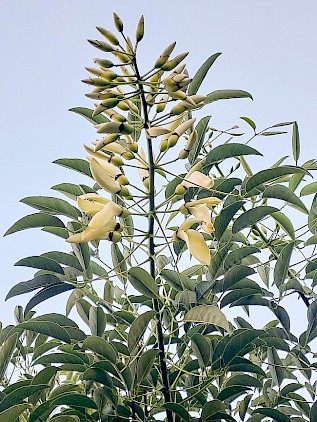
Photos: Roderick Cameron, Uruguay
An article by Roderick Cameron is in preparation for our next Yearbook, to be published in 2026. Please send any information, comments and photos, including on trees seen in the wild to Enable JavaScript to view protected content. by 15 December 2025.
The article on the Tree of the Year for 2024, Pseudolarix amabilis, is at the editing stage and will be published in the 2024 Yearbook this summer.
Magnolia denudata
IDS Yearbook 2023
Anthony S Aiello
One of the greatest events of early spring is to watch the emergence, progression, and efflorescence of Magnolia denudata, the yulan, or lily-tree magnolia. And although there are often invidious comparisons to later-blooming magnolias...
View PDF
Kalopanax septemlobus
IDS Yearbook 2022
Tom Christian
Castor aralia Kalopanax septemlobus (Thunb.) Koidz. is a polymorphic yet distinctive tree of the ivy family distributed across a large swathe of east Asia, from hot sticky south-central China to cold harsh Sakhalin. Within its native range it has long been valued for...
View PDF
Toona sinensis
IDS Yearbook 2021
David J. Mabberley
Chinese toon, Toona sinensis, belongs to the mahogany family, Meliaceae, but unlike most species in that family it is deciduous. Because Meliaceae are almost entirely tropical, the family is poorly represented in cool temperate gardens, though the so-called...
View PDF
Acer griseum, the paperbark maple
IDS Yearbook 2020
Anthony S. Aiello, Kris R. Bachtell, Michael S. Dosmann, and Kang Wang
Ever since it came into Western cultivation, numerous authors have extolled the virtues of Acer griseum, and a perfect description is that of Vicary Gibbs, who wrote that, ‘…the nearest approach to a perfect tree that I can think of, which indeed owns “every virtue, every grace”…
View PDF
Torreya nucifera
IDS Yearbook 2019
Eric Hsu
Just as the Europeans have worshipped the common yew (Taxus baccata) in ancient religions and valued its wood, the Japanese and South Koreans have sanctified the Japanese nutmeg (Torreya nucifera) and prized its wood and fruits. It is easy to see why these trees are venerated there when...
View PDF
Araucaria bidwillii
IDS Yearbook 2018
Alistair Watt
The genus Araucaria is perhaps the most significant of all the ‘living fossil’ trees that exist today. No less than 20 species still grow across the southern hemisphere, two species in South America, and the others on the opposite side of the Pacific Ocean in Australia, New Guinea and...
View PDF
Prumnopitys andina
IDS Yearbook 2017
Martin Gardner, Tom Christian and Dan Luscombe
Surprisingly perhaps, the dramatic and varied landscapes of Chile are home to only nine conifer species. Seven of these also occur across the Andes into neighbouring Argentina where they inhabit a narrow band of temperate rainforest. All but the shrubby Lepidothamnus fonkii have been successfully...
View PDF
Corylus fargesii
IDS Yearbook 2016
Koen Camelbeke and Anthony S. Aiello
Every now and then a plant can unexpectedly become the subject of a hype. Visiting gardens, collections or nurseries one encounters fellow plant enthusiasts and the typical questions pop up: do you know where I can get or buy...? Can you provide me with some propagation material of...?
View PDF
Quercus rysophylla
IDS Yearbook 2015
Allen Coombes
It is with pleasure that I start writing these pages as this species has fascinated me for many years and it is one that certainly influenced my interests and, indeed, my life. I have always worked with large numbers of species, from my days at Hillier Nurseries, to the Sir Harold Hillier Gardens and now the...
View PDF
Eucryphia moorei
IDS Yearbook 2014
Ben Wallace
Val Morrell was born into a poor poultry farming family near Sydney, just before the outbreak of war in 1939. She attended a local school, and later, during the 1960s studied philosophy at the University of Sydney, becoming a renowned environmental philosopher and author, studying and lecturing in...
View PDF
Thuja plicata
IDS Yearbook 2013
Douglas Justice
“In a small clearing in the forest, a young woman is in labour. Two women companions urge her to pull hard on the cedar bark rope tied to a nearby tree. The baby, born onto a newly made cedar bark mat, cries its arrival into the Northwest Coast world. Its cradle of firmly woven cedar root, with a...
View PDF
Heptacodium miconioides
IDS Yearbook 2012
John Grimshaw
When the terms of reference for New Trees were drawn up (see pp. 1-2), having agreed that the book would contain only trees, we had to address the deceptive question ‘what is a tree?’ Most of us ‘can recognise a tree when we see one’ and in many ways this is as good an answer as one needs, but when is a...
View PDF
Catalpa Scop.
IDS Yearbook 2011
John Grimshaw and Richard T. Olsen
Catalpa is a genus of nine species of deciduous trees, found in eastern Asia, the eastern United States and the Caribbean. In horticulture the genus is most familiar in the form of the two American species, the Indian bean trees C. bignonioides and C. speciosa, although the latter is much less commonly...
View PDF
Taiwania cryptomerioides
IDS Yearbook 2010
John Grimshaw
As a young gardener and botany student I was more or less familiar with the ‘standard range’ of British native and ornamental woody plants, but had never given trees much attention: they were just there. Then, in the early summer of 1989, I joined a group visiting Batsford Arboretum where the...
View PDF
Trochodendron aralioides
IDS Yearbook 2009
Susyn Andrews
The generic name Trochodendron, derived from the Greek trochus, a wheel and dendron, a tree, literally means wheel-tree from the manner in which the stamens radiate like the spokes of a wheel, as well as the spreading leaves on the branches. As for the specific epithet, it is named for its...
View PDF
Eucommia ulmoides
IDS Yearbook 2008
Susyn Andrews
Dr Augustine Henry (1857–1930) was stationed in China as a medical officer from 1881 to 1900 apart from a few short periods on home leave. He began collecting plants in earnest c. 1884 and sometime between 1887 and 1890 sent back to Kew for identification, material of the...
View PDF
Parrotia persica and P. subaequalis
IDS Yearbook 2007
Susyn Andrews
One of the joys of putting together the “Trees of the Year” since 1993 is that you never know what gems of information you are going to unearth, whether on a letter attached to a herbarium specimen, a little known paper in an obscure journal, an observation on an herbarium label or a chance remark by...
View PDF
Carya ovata, part I
IDS Yearboook 2006
Susyn Andrews
Carya Nutt. is one of nine genera that comprise the Juglandaceae (Stone 1997). This small family of deciduous trees includes such well-known members as Juglans or walnuts, Carya the hickories and Pterocarya the wing-nuts. They occur in the Western Hemisphere and Eurasia. Stevens (2006) places...
View PDF
Magnolia campbellii
IDS Yearbook 2005
Susyn Andrews
The genus Magnolia contains three subgenera: Magnolia, Yulania and Gynopodium (Figlar & Nooteboom 2004). The deciduous taxa with flowers appearing before the foliage fall into subgenus Yulania. This subgenus comprises two sections and six subsections, of which subsection Yulania contains...
View PDF
Liquidambar
IDS Yearbook 2004
Eric Hsu and Susyn Andrews
Liquidambar L. has close taxonomic affinities with Altingia Noronha since these two genera share gum ducts associated with vascular bundles, terminal buds enclosed within numerous bud scales, spirally arranged stipulate leaves, polyporate (with several pore-like apertures) pollen grains, condensed...
View PDF
Trees of the year, past and future 2002
IDS Yearbook 2002
Susyn Andrews
Rafael Govaerts wrote in to say that he visited Crete in 1987 with the intention of bringing back living material of Zelkova abelicea. Eventually, after a long search, he found a mature tree on the eastern side of the island. The tree was full of immature seeds, all of which appeared to be empty and so he...
View PDF



